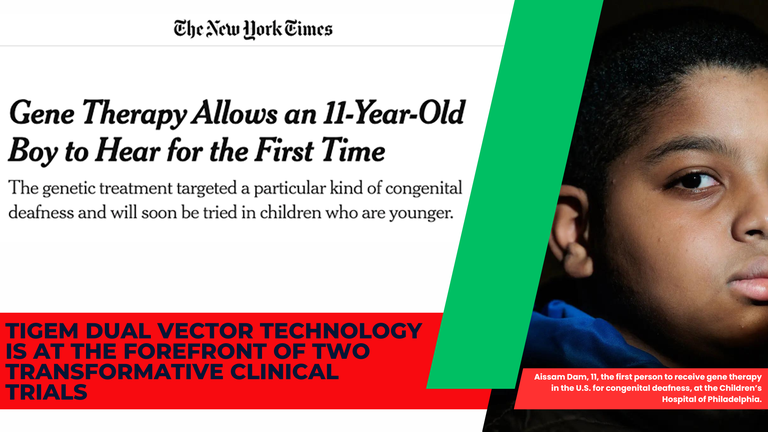Dual Vector Technology: A Game-Changer in Gene Therapy for Hereditary Deafness

Gene therapy is experiencing a groundbreaking revolution in the treatment of hereditary deafness, thanks to the pioneering work of Dr. Alberto Auricchio and his team at the Telethon Institute of Genetics and Medicine (Tigem). Their innovative dual vector technology is at the forefront of two transformative clinical trials that have the potential to change the lives of millions affected by hereditary hearing impairments.
Dr. Auricchio's work has long aimed to overcome the limitations of viral vectors, a practical obstacle in gene therapy for diseases associated with large genes. The capacity of these vectors restricts their use in treating conditions like hereditary deafness, where the genetic material exceeds their size limitations. To address this challenge, Dr. Auricchio and his team developed two innovative platforms – the 'Dual Hybrid' system and the intein-based system. These platforms allow the genetic material to be divided into multiple viral vectors, which can then recombine within the cell to form the complete therapeutic protein. This ingenious approach has opened doors to treating conditions with large disease genes that were previously deemed untreatable.
In a groundbreaking development, results from 2 new clinical studies reported this confirm that the dual vector technology developed by Dr. Alberto Auricchio and his team at Tigem has ushered in a new era of hope for individuals with hereditary deafness.
The first trial, conducted at The Children's Hospital of Philadelphia, made headlines when it successfully treated an 11-year-old boy suffering from hereditary deafness due to variants in the gene coding for otoferlin. This historic achievement marked the first time gene therapy for hereditary deafness was administered in the United States. The results were nothing short of extraordinary, with the patient regaining the ability to hear sounds for the first time in his life. This remarkable success story has captured the attention of the world, demonstrating the immense potential of gene therapy in restoring hearing. Crucially, this breakthrough was made possible by the dual vector technology developed at Tigem.
In another remarkable clinical trial, investigators from Mass Eye and Ear, a member of Mass General Brigham, have demonstrated the effectiveness of gene therapy in restoring hearing function for children suffering from hereditary deafness. This trial focused on a specific form of autosomal recessive deafness called DFNB9, caused by mutations in the OTOF gene, which affects the transmission of sound signals from the ear to the brain. The novel gene therapy, utilizing the dual-AAV vector technology, has shown remarkable results.
Six children with DFNB9 were observed over a 26-week period at the Eye & ENT Hospital of Fudan University in Shanghai, China. The researchers introduced the modified human OTOF gene into the inner ears of the patients using the dual-AAV vector. Astonishingly, after 26 weeks, five of the children demonstrated significant hearing recovery, with a reduction of 40-57 decibels in auditory brainstem response (ABR) testing, substantial improvements in speech perception, and the ability to engage in normal conversation. The trial's success showcases the safety and efficacy of gene therapies in treating DFNB9 and potentially other genetic hearing loss conditions.
The dual-AAV vector's ability to accommodate large genes like OTOF represents a breakthrough, as traditional AAVs have size limitations. This achievement opens doors for the application of gene therapy to a wider range of genetic disorders.
The impact of these developments extends beyond the treatment of a single condition. There are approximately a thousand large disease genes currently unaddressed by existing vectors, potentially benefiting hundreds of genetic diseases. The hope is that these innovative technologies will unlock the door to gene therapy for an ever-expanding range of disorders. These two groundbreaking clinical trials highlight the transformative potential of gene therapy in restoring hearing function and offer promise for a multitude of genetic diseases. As science continues to push the boundaries of what is possible, the future for those with hearing impairments and other genetic disorders appears brighter than ever.
